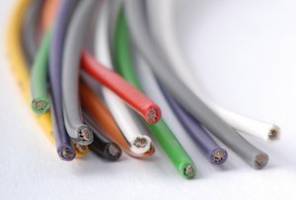From outlets that allow you to plug in your devices, to switches that control the flow of electricity, to safety disconnects that allow you to turn off the power in case of an emergency, there are many components that make up a home’s electrical system. Understanding these components and how they work can help you better understand your home’s electrical needs and take steps to ensure your safety.
Keep reading to learn more about the different electrical components you may find in your home and how they work.
Why It’s Important to Understand Your Home’s Electrical Components
Understanding the different electrical components in your home is important for a number of reasons, but the main reasons are safety, convenience, and easier home maintenance. Let’s touch on each of these areas briefly, so that you can see the value in learning about your home’s electrical components. We will then explain more about each of the most common electrical fixtures and what they do.
Safety
Knowledge of your home’s electrical components can help you identify potential safety hazards and take steps to prevent accidents. For example, understanding the importance of GFCIs can help you prevent electrical shocks, and knowing where safety disconnects are located can help you turn off the power in case of an emergency.
Convenience
Understanding your home’s electrical components can also make your life more convenient. For example, knowing how to use switches can help you control the flow of electricity to different appliances and devices, and understanding how outlets work can help you determine where to plug things in.
Home maintenance
Knowing your home’s electrical components can also help you identify potential problems and take steps to fix them. For example, if you know how your breaker panel works, you’ll be able to identify when a breaker has tripped and reset it. Be sure to call a professional to have them diagnose the reason why it tripped. Breakers do not trip for no reason.
The Different Electrical Components in a Home
Depending on how new your home is and where you live, you may have different electrical components inside your residence. That said, there are a number of things that most homes have in common. Let’s go over those now so that you’re familiar with the basics of home electricity.
Outlet
An outlet is a device that allows you to plug in electrical appliances or devices. You’ll find outlets throughout your home, usually located near the floor or along walls.

Switch
A switch is a device that controls the flow of electricity to a particular electrical appliance or device. You’ll find switches in many areas of your home, such as for lighting, ceiling fans, and appliances.

GFCI (Ground Fault Circuit Interrupter)
A GFCI is a type of outlet that is designed to protect you from electrical shocks. It works by sensing when there is an imbalance in the electrical current and quickly shutting off the power to prevent accidents. You’ll often find GFCIs in areas where there is a risk of electrical shocks, such as bathrooms, kitchens, and outdoor areas.

Breaker
A breaker is a device that controls the flow of electricity to a particular circuit in your home. It’s designed to trip and shut off the power if there is too much electricity flowing through the circuit, which can prevent fires and other electrical accidents. You’ll find the main breaker panel in your home, which controls the flow of electricity to all the circuits in your home.
Panel
A panel is a group of breakers that control the flow of electricity to different circuits in your home. The main breaker panel is typically located outside of your home. Due to the weather here in Arizona, it is important to get your panel serviced yearly.

Surge protector
A surge protector is a device that protects your electrical appliances and devices from power surges, which can damage or destroy them. You can get surge protectors for individual appliances or devices, or you can get a whole-home surge protector to protect all the electrical components in your home.
Safety disconnects
Safety disconnects are devices that allow you to safely turn off the electricity in a particular area of your home. They’re often located next to the item they protect and are used to shut off power in case of an emergency.
Tamper-resistant outlets
Tamper-resistant outlets are designed to prevent accidents, such as children inserting foreign objects into the outlets. They have shutters that only open when a plug is inserted, preventing accidental electrocution.
Conclusion
Understanding the basic components of your home’s electrical system is important for many reasons. By understanding how these components work and how they fit together, you can take steps to ensure your safety, make your life more convenient, and minimize the stress that comes with home maintenance. When in doubt, you can always contact an electrician to help you out.

